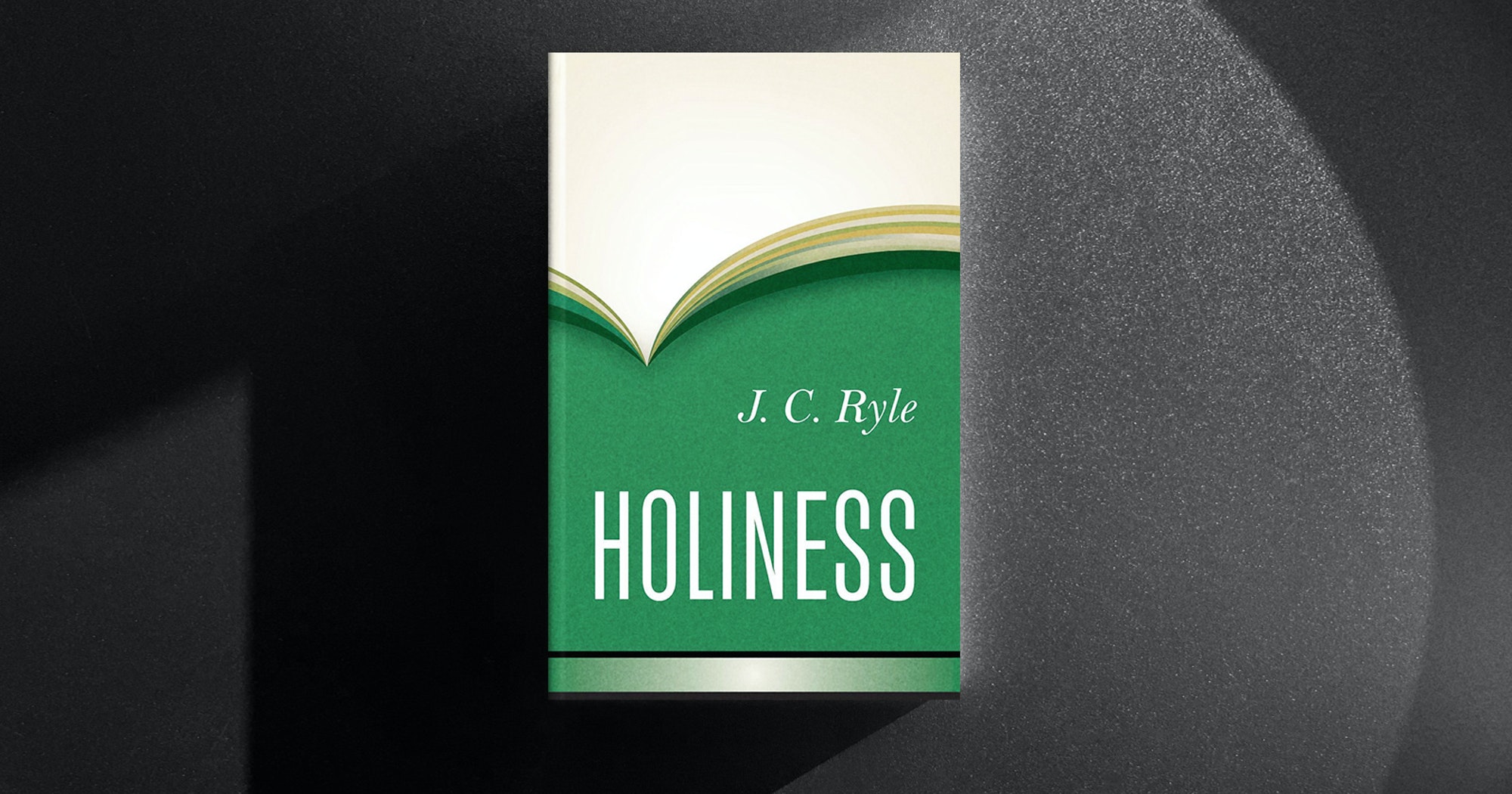http://rss.desiringgod.org/link/10732/14773864/holiness

The second half of the nineteenth century was not kind to Victorian evangelicals.
Darwin’s ideas, which first appeared in print in The Origin of Species in 1859, began to undermine the faith of some, just as German higher criticism of the Old Testament reached British shores in Essays and Reviews. Meanwhile, the Ritualists were busy unprotestantizing the Church of England, as men of “broad views” were insisting that sincerity — not truth — was the “one thing needful.” To make matters worse, relations between evangelical churchmen and dissenters reached new lows, and attacking (or defending) the establishment became a near-universal ecclesiastical obsession.
But in the 1870s, a renewal movement imported from America seemed to offer new spiritual life to embattled evangelicals. It promised full salvation and complete deliverance from all known sin — essentially a second conversion experience — and all one had to do was simply “let go and let God.” A series of popular meetings was held throughout England to promote this new vision of the Christian life, and the Keswick Convention was born.
Holiness Unfolded and Defended
J.C. Ryle (1816–1900), the “Anglican Spurgeon” and undisputed leader of the evangelical party within the Church of England, was entirely unsympathetic with Keswick spirituality. He, along with other evangelical leaders of the old guard, attempted to redirect this new interest in personal holiness into more orthodox channels. Articles were written. Speeches were made. A rival conference was even held in 1875 to promote scriptural holiness. Even so, the Keswick Movement continued to gain steam, especially among younger evangelicals. So, Ryle published his own response in 1877, which was then enlarged in 1879.
Holiness: Its Nature, Hindrances, Difficulties, and Roots proved to be one of Ryle’s most popular works. It is one of the best presentations of Puritan and Reformed spirituality ever written, and thanks to the simplicity and forcefulness of Ryle’s writing style, it is certainly one of the most accessible. Think of Holiness as The Pilgrim’s Progress stated propositionally. And like Bunyan’s masterpiece, it has proved to be remarkably enduring. It went through five editions during Ryle’s lifetime, and it has been republished regularly since the prompting of Martyn Lloyd-Jones in 1952.
“Think of ‘Holiness’ as ‘The Pilgrim’s Progress’ stated propositionally.”
The enlarged edition of Holiness (1879) contains twenty-one papers, as well as an excellent introduction. The first seven chapters are the heart of Holiness and form a book within a book (this was the original edition of 1877). Here Ryle explains “the real nature of holiness, and the temptations and difficulties which all must expect who follow it” (xiii). The rest of the book consists of a series of holiness-related sermons that are arranged thematically: biblical character studies (chapters 8–12), the church (chapters 13–14), Christ (chapters 15–20), and extracts from Robert Traill and Thomas Brooks (chapter 21).
Rather than discussing each chapter, allow me to introduce you to some of the great themes of this spiritual classic.
Holiness
Holiness takes holiness seriously. Personal holiness is essential for final salvation. Such a claim is neither legalism nor a threat to the precious doctrine of justification by faith alone. It is the clear and sobering truth of Scripture: “Strive . . . for the holiness without which no one will see the Lord” (Hebrews 12:14). If Holiness accomplishes anything, it reminds the reader of this critical and potentially uncomfortable truth. Read the chapter on Lot’s wife (chapter 10), or consider this question Ryle poses to the indifferent:
Suppose for a moment that you were allowed to enter heaven without holiness. What would you do? What possible enjoyment could you feel there? To which of all the saints would you join yourself, and by whose side would you sit down? Their pleasures are not your pleasures, their tastes not your tastes, their character not your character. How could you possibly be happy, if you had not been holy on earth? (53)
Expect to be convicted. Expect to be challenged. And expect to be encouraged if you are determined to pursue holiness with greater zeal.
Sin
Holiness takes sin seriously. Ryle argues that he who “wishes to attain right views about Christian holiness must begin by examining the vast and solemn subject of sin” (1).
Sin is a vast moral disease that affects the whole human race. It consists in “doing, saying, thinking, or imagining anything that is not in perfect conformity with the mind and law of God” (2). It is a family disease that we all inherit from our first parents, and it infects every part of our moral constitution. Its guilt and vileness — the very sinfulness of sin itself — must be viewed in light of its remedy: “Terribly black must that guilt be for which nothing but the blood of the Son of God could make satisfaction” (8). But in a deft pastoral move (which is typical for Holiness), Ryle pivots from the guilt of sin to the grace of God:
There is a remedy revealed for man’s need, as wide and broad and deep as man’s disease. We need not be afraid to look at sin, and study its nature, origin, power, extent, and vileness, if we only look at the same time at the almighty medicine provided for us in the salvation that is in Jesus Christ. Though sin has abounded, grace has much more abounded. (11)
Doctrine
Holiness takes doctrine seriously. In the first seven chapters of the book, Ryle treats the doctrine of sanctification systematically, beginning with sin (chapter 1) and ending with assurance (chapter 7). These chapters are undoubtedly the most theologically sophisticated of the book. Ryle defines terms, exegetes Scripture, makes important distinctions, discusses church formularies, quotes authorities, and refutes opponents. Yet at the same time, he never loses sight of the pastoral purposes of the work. I’m not aware of anything comparable in terms of theological depth and pastoral sensitivity.
The same is true of the chapters that make up the rest of the work. Because they were originally sermons, they necessarily contain more exhortation and practical application than the first seven chapters, but they are by no means theologically anemic. Ryle has no problem discussing the person of Christ, the inspiration of Scripture, or the nature of the church when the sermon text calls for it.
Ryle’s works are well-known and well-loved for their combination of solid doctrinal content and practical pastoral wisdom. In this respect, Holiness is probably Ryle at his very best.
Growth
Holiness takes growth seriously. Christians must grow in holiness, for sanctification is a progressive work. Holiness will force you to come to terms with this reality. True Christianity is a fight: “To be at peace with the world, the flesh, and the devil is to be at enmity with God, and in the broad way that leads to destruction. We have no option. We must either fight or be lost” (67).
Ryle reminds the reader that it is costly to follow Christ. It will cost a man his sin and self-righteousness, his love of peace and ease, and the favor of the world. Long before Dietrich Bonhoeffer criticized cheap grace, Ryle noted, “A religion that costs nothing is worth nothing! A cheap Christianity, without a cross, will prove in the end a useless Christianity, without a crown” (86).
Moreover, the Christian must “grow in grace.” Ryle explains,
When I speak of a man “growing in grace,” I mean simply this — that his sense of sin is becoming deeper, his faith stronger, his hope brighter, his love more extensive, his spiritual-mindedness more marked. He feels more of the power of godliness in his own heart. He manifests more of it in his life. He is going on from strength to strength, from faith to faith, and from grace to grace. (101)
And how do Christians grow? “He that would grow in grace must use the means of growth” (109), which include the private means of grace (prayer and Bible reading, meditation and self-examination, and habitual communion with Christ) and the public means of grace (the preached word and worship, the sacraments and Sabbath rest).
“It will cost you to follow Christ, but those costs pale in comparison to the reward that awaits those who persevere.”
These chapters are challenging, to be sure, but I find Ryle’s realism refreshing. There are no rose-colored glasses here. Ryle’s description of the Christian life is one that most of us can recognize and identify with. It is a fight. There are costs. Growth is essential and difficult. And there is an urgency here that is palpable. Even so, I emerge from these chapters more encouraged to pursue holiness than when I begin reading. There are resources as well as challenges. True Christianity is a good fight. Ryle reminds us that we have the best generals, the best helps, the best promises, and assurance of victory. It will cost you to follow Christ, but those costs pale in comparison to the reward that awaits those who persevere. And growth is necessary, but there are means available within the reach of all believers that will help them to “grow in grace.”
Christ
Finally, Holiness takes Christ seriously. The person and work of Christ is, perhaps, the greatest theme of this work. Ryle certainly intended it to be so.
Christ is “the sun and center” of Christian piety. “What the sun is in the firmament of heaven, that Christ is in true Christianity” (377). Communion with Christ is “the one secret of eminent holiness. He that would be conformed to Christ’s image, and become a Christ-like man, must be constantly studying Christ Himself” (234). Moreover, Christ is the “mainspring both of doctrinal and practical Christianity. A right knowledge of Christ is essential to a right knowledge of sanctification as well as justification. He that follows after holiness will make no progress unless he gives to Christ his rightful place” (370).
The last chapter sums up the place of Christ in Holiness — “Christ is all.” It is one of the most outstanding chapters Ryle ever wrote, which is saying quite a lot. Instead of describing it, let me just encourage you to read it, along with the chapters that precede it. It is a moving reminder that personal holiness is Christocentric and cruciform. Ryle closes Holiness with these words:
Let us live on Christ. Let us live in Christ. Let us live with Christ. Let us live to Christ. So doing, we shall prove that we fully realize that “Christ is all.” So doing, we shall feel great peace, and attain more of that “holiness without which no man shall see the Lord.” (389)
J.C. Ryle’s Holiness certainly can help you along in this great pursuit.



